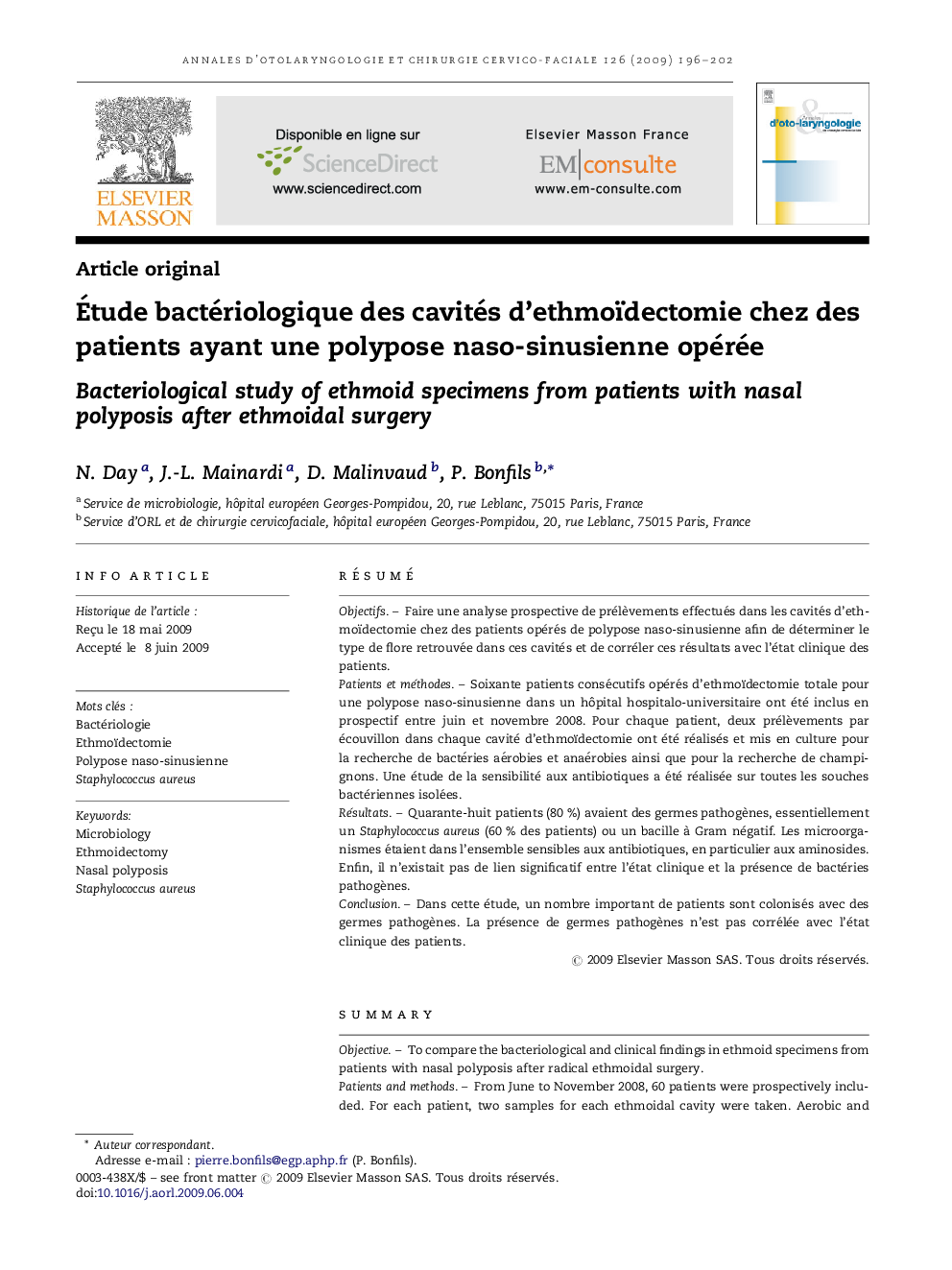| Article ID | Journal | Published Year | Pages | File Type |
|---|---|---|---|---|
| 4105738 | Annales d'Otolaryngologie et de Chirurgie Cervico-faciale | 2009 | 7 Pages |
RésuméObjectifsFaire une analyse prospective de prélèvements effectués dans les cavités d’ethmoïdectomie chez des patients opérés de polypose naso-sinusienne afin de déterminer le type de flore retrouvée dans ces cavités et de corréler ces résultats avec l’état clinique des patients.Patients et méthodesSoixante patients consécutifs opérés d’ethmoïdectomie totale pour une polypose naso-sinusienne dans un hôpital hospitalo-universitaire ont été inclus en prospectif entre juin et novembre 2008. Pour chaque patient, deux prélèvements par écouvillon dans chaque cavité d’ethmoïdectomie ont été réalisés et mis en culture pour la recherche de bactéries aérobies et anaérobies ainsi que pour la recherche de champignons. Une étude de la sensibilité aux antibiotiques a été réalisée sur toutes les souches bactériennes isolées.RésultatsQuarante-huit patients (80 %) avaient des germes pathogènes, essentiellement un Staphylococcus aureus (60 % des patients) ou un bacille à Gram négatif. Les microorganismes étaient dans l’ensemble sensibles aux antibiotiques, en particulier aux aminosides. Enfin, il n’existait pas de lien significatif entre l’état clinique et la présence de bactéries pathogènes.ConclusionDans cette étude, un nombre important de patients sont colonisés avec des germes pathogènes. La présence de germes pathogènes n’est pas corrélée avec l’état clinique des patients.
SummaryObjectiveTo compare the bacteriological and clinical findings in ethmoid specimens from patients with nasal polyposis after radical ethmoidal surgery.Patients and methodsFrom June to November 2008, 60 patients were prospectively included. For each patient, two samples for each ethmoidal cavity were taken. Aerobic and anaerobic bacterial cultures and fungal cultures were processed and the antibiotic susceptibility was evaluated for each isolated bacterial strain.ResultsPathogenic bacteria were isolated in 48 patients (80%) including predominantly Staphylococcus aureus (60%) or a Gram-negative bacterium. The microorganisms were nearly all susceptible to antibiotics, including the aminoglycosides. No correlation between the presence of pathogenic bacteria and the clinical status of the patients was found.ConclusionIn this study, a great number of patients was colonized with pathogenic bacteria. However, the presence of pathogenic bacteria was not correlated with the clinical status of the patients.
